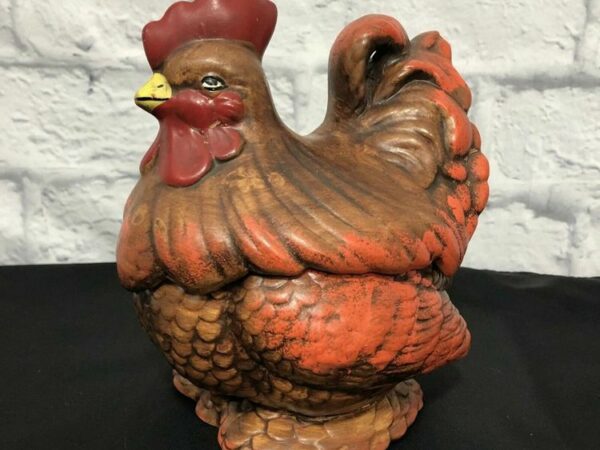When we talk about “rare Indian artifacts”, we’re referring to anything that was created by Native Americans prior to the European colonization of North America. This includes everything from arrowheads and pottery shards to beaded jewelry and ceremonial masks. These items are rare because they offer a glimpse into the cultures and traditions of a people who once occupied this land.
If you’re lucky enough to come across rare Indian artifacts, it’s important to know how to identify and value them properly. In this blog post, we’ll provide a guide to doing just that! We’ll cover the different types of rare Indian artifacts and what makes them so valuable. So if you’ve ever wondered about the worth of that old statue or pottery piece you found at a garage sale, keep reading!
Table of Contents
The History of Native American Artifacts
Native American artifacts are some of the most incredible and sacred objects in the world. For centuries, these items have been used for everything from ceremonial purposes to storytelling. Today, they continue to play an important role in the lives of indigenous people.
There is evidence that Native American art dates back thousands of years. Some of the earliest examples come from the Clovis culture, which was active in North America during the last ice age. These early people left behind a wealth of tools and weapons, many of which were adorned with intricate carvings. Another early culture includes the Folsom culture, characterized by the use of small, fluted projectile points called “Folsom points.” The Folsom culture disappeared from the archaeological record around 9300 BC, but it left a significant impact on the people who came after.
As Native American cultures developed, so too did their tools and art. In many cases, these items served a functional purpose, such as providing shelter or storage. However, they also became increasingly elaborate, reflecting the spiritual beliefs of their creators.
Unfortunately, many Native American artifacts have been destroyed or stolen over the years. In the 1800s, government officials encouraged collectors to take artifacts from Indian reservations. In addition, grave robbers often plundered burial sites in search of valuable items. Today, Native American artifacts are treasured by both indigenous people and collectors alike. They provide us with a unique window into the past and remind us of the rich cultural heritage of this country.
Is it Legal to Own Native American Artifacts?
The issue of who owns ancient artifacts is a complex one, and it is further complicated by the fact that laws vary from country to country. In the United States, for example, the Native American Graves Protection and Repatriation Act (NAGPRA) provides a process for returning certain objects to their rightful owners, but it does not address broader questions of ownership or stewardship. As a result, ancient artifacts that are found on private land are generally considered to be the property of the individual landowner, although there is a very small possibility that a tribe could make a claim of superior title.
Meanwhile, archaeological materials that are taken from federal or Indian lands without a permit are unlawful under U.S. law. This distinction highlights the importance of knowing both the provenance and the legal status of an artifact before acquiring it.
Types of Native American Artifacts
Native American artifacts come in many different forms. While some are purely functional, others are highly decorative. Common examples of Native American artifacts include pottery, beadwork, baskets, and carved stone. These items were often created for use in everyday life, but they also played an important role in religious ceremonies and cultural traditions.
Lithics (Stone Artifacts)
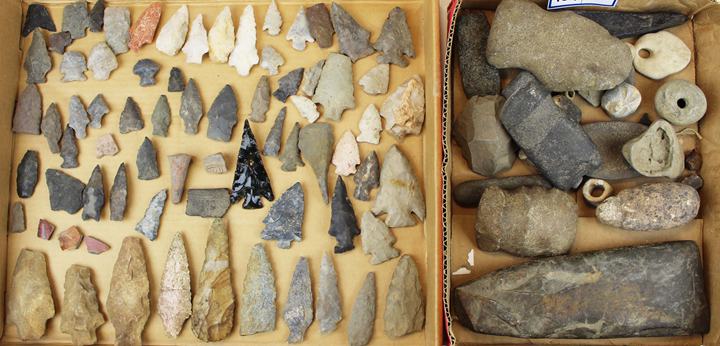
Lithics are the archaeological term for stone tools and weapons. In North America, some of the earliest known lithics date back over 10,000 years. These ancient artifacts offer a unique glimpse into the lives of the people who made and used them.
Ground stone tools were used for a variety of tasks, including chopping, grinding, and shaping wood. Early examples of ground stone tools include axes and hammer stones, which were used to fell trees and shape wooden beams. As the technology developed, more sophisticated tools were created, such as drills, which were used to create holes for fastening planks together. In addition to utilitarian objects, ground stone tools were also used to create artwork. Many early examples of Native American art are carved into stone pipes and bowls.
Arrowheads and spear points are another type of Native American stone artifact. These were typically made from flint or obsidian, and they were used for hunting and warfare. Although they served a practical purpose, arrowheads and spear points also often possessed great aesthetic value, with many examples featuring intricate designs and detailed workmanship.
There is a wide variety of other items that can be classified as artifacts. Canoe anchors and fishing net weights offer a tantalizing glimpse into the way in which Native Americans fished, while paint pots and carved stone pipes provide clues to their customs and beliefs. The mortar and pestle was a vital tool for grinding ingredients for medicines and food, while stones were used for everything from sharpening knives to chipping away at pieces of wood.
Ceramics
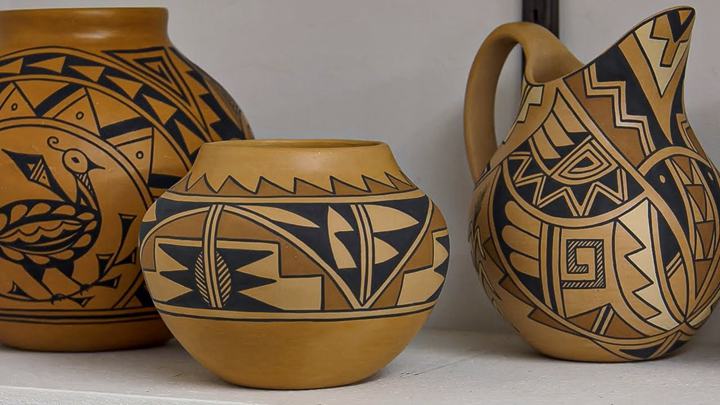
Native American ceramics are some of the most interesting and beautiful examples of this art form. Many tribal groups had their own distinct styles, which changed over time as they came into contact with other cultures.
Unlike other cultures, who had access to a wide variety of clay deposits, the Native Americans of North America had to make do with whatever materials were available in their local area. As a result, each tribe developed its own unique style of pottery, using different methods of shaping, decorating, and firing the clay.
While each tribe has its own style of pottery, there are some common themes and motifs. For example, many Native American pots feature animals, which are often seen as powerful symbols of nature. Other common designs include geometric patterns and scenes from daily life. Whether used for cooking, storage, or decoration, Native American pottery is both functional and beautiful.
Organic Artifacts
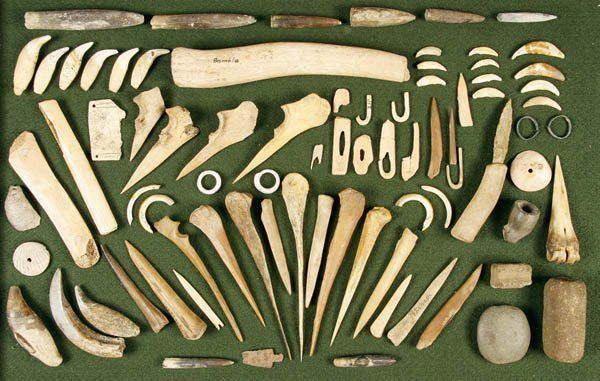
Native American organic artifacts are works of art created from natural materials such as wood, bone, stone, and shell. These materials have been used by Native Americans for centuries to create a wide variety of objects, including hunting tools, masks, clothing, and jewelry.
Native Americans were experts at using the resources around them to create everything they needed for daily life. Awls and needles, for example, were commonly used for sewing and repairs, while fishing hooks were essential for feeding the tribe. Projectile points could be used as arrows or spears, while scrapers were used for cleaning hides.
From delicate necklaces to chunky bracelets, jewelry made from Native American organic materials is both unique and stylish. Each piece is carefully crafted by hand, ensuring that no two are exactly alike. In many cultures, these materials are believed to possess healing properties. Wearing them can be a way to show respect for the earth and its resources.
Wampum is especially interesting. It is a traditional type of beadwork made by Native American tribes in the northeastern United States. The beads are usually made from shells, and each tribe has its own distinct design and color scheme. The beads are often strung together into belts or sashes, which are used for ceremonial purposes or as a sign of status.
Harpoons were used for hunting large animals, while dippers and spoons made it easier to eat soups and stews. Combs helped to keep hair clean and untangled. In short, Native Americans had a profound understanding of how to use organic materials to produce everything they needed to survive.
Metal Artifacts
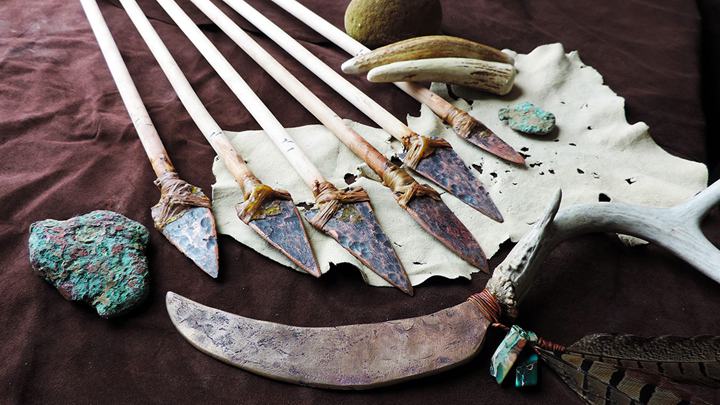
Metalworking was an important skill for Native Americans, as it was essential for the creation of tools, weapons, and other objects. However, metalwork was also used to create beautiful artifacts that were both functional and artful. These objects often featured intricate designs that were inspired by nature and Native American folklore. Metal artifacts were usually made from copper, brass, or iron, and they were often decorated with feathers, beads, or other materials.
Native American metal artifacts include a wide range of items, from tools and weapons to jewelry and ornaments. Spears, knives, and chisels were essential for hunting and warfare, while beads, plates, and ornaments were used to decorate clothing and headdresses.
10 Rarest and Most Valuable Indian Artifacts
In recent years, there has been a surge in the popularity of Indian artifacts, with many pieces fetching high prices at auction. Here are 10 of the rarest and most valuable Indian artifacts that have been sold in recent years:
Plains Indian Tomahawk from ca. 1870 |
$6,000-8,000 |
Arrowhead from 4,000 BC |
$10,000-20,000 |
Wahpeton Sioux Effigy Wood Stem and Catlinite Pipe Bowl |
$25,000 |
Classic Navajo Child’s Blanket |
$43,750 |
Hopi Kachina figure |
$43,750 |
Arapaho Beaded and Fringed Hide Child’s Shirt |
$59,375 |
A Cheyenne Beaded and Quilled Hide Pipe Bag |
$68,500 |
A Nez Perce Beaded Hide Dress |
$86,500 |
A Nez Perce Beaded Hide Man’s Wearing Shirt |
$158,500 |
A Bella Coola Polychromed Wood Mask |
$433,000 |
How to Identify Indian Artifacts
There are many different types of Indian artifacts, and identifying them can be a challenge. However, there are some key characteristics that can help you to spot an artifact.
Do Your Research Beforehand
Before you can start identifying Indian artifacts, it is important to do your research. Read books and articles about the history of the area where you will be searching. This will give you a better understanding of the tribes that lived in the area and the types of artifacts they would have used. You should also familiarize yourself with the different types of rocks and minerals that are found in the area. This knowledge will be helpful in identifying Indian artifacts made from stone.
In addition, take some time to learn about the methods used by archaeologists to date artifacts. This information will be useful in determining the age of the artifacts you find. With a little preparation, you will be well on your way to finding and identifying Indian artifacts.
Examine the Workmanship
When it comes to identifying Indian artifacts, the first step is to take a close look at the materials used. Typically, Indian artifacts are made from stone, clay, wood, or bone. If you’re not sure what type of material you’re looking at, try doing a quick Google search or consulting a guidebook. Once you’ve identified the material, the next step is to examine the shape and size of the object. Again, there are no hard-and-fast rules here, but in general, Indian artifacts tend to be fairly small and compact.
Arrowheads and spearheads are among the most easily recognizable of all Indian artifacts. They are typically made from a hard stone, such as flint, and have a clear point and a well-defined edge and base. Knives and ax heads also tend to be made from a hard stone, and usually have at least one sharp edge. This sharp edge is usually the result of chipping away at the stone with another tool.
Take a look at the design of an artifact. Similar patterns and styles can be found across different cultures, so by comparing the workmanship of an artifact to others from known regions, you may be able to identify its source. For example, artifacts from the Northwest Coast are generally characterized by straight lines and intricate designs, while those from the Southwest tend to have more curvature and simpler designs.
As you examine a potential artifact, think about what it might have been used for. This can provide clues about its age and cultural origins.
Get Professional Help
The best way to ensure that you are collecting authentic artifacts is to get help from a professional. A professional appraiser will be able to quickly identify genuine artifacts and provide you with guidance on how to care for them. As a result, working with a professional is the best way to build a collection of authentic Indian artifacts.
Guide Books
Consulting a guide book can help you to identify common artifacts and to understand the history behind them. Here are some of our recommendations:
- Ornamental Indian Artifacts, Identification and Value Guideby Lar Hothem
- Rare & Unusual Indian Artifacts: Identification and Value Guideby Lar Hothem
- Indian Axes and Related Stone Artifacts (Indian Axes & Related Stone Artifacts: Identification & Values)by Lar Hothem
- Arrowhead Adventures The Ultimate Guide to Indian Artifact Huntingby William Bauer
The Value of an Indian Artifact
Many people own Indian artifacts that have been passed down through the generations, but they may not know the value of these items. There are a few ways to determine the value of an artifact.
Provenance
Many different factors contribute to the value of an artifact, but one of the most important is its provenance, or history. Provenance can include information about where and when the artifact was found, as well as who owned it before it entered the market. This type of information is essential for determining an artifact’s authenticity and its value. In general, the more complete and accurate the provenance, the higher the value of the artifact.
For collectors, provenance also provides a way to trace the history of an object and connect it to a particular time and place. For example, an artifact with a provenance indicating that it was excavated from a famous battlefield would be worth more than one with no such information.
Age
If the artifact is very old, it is likely to be more valuable than a newer one. This is because artifacts from early cultures are more rare, and they offer insights into the history and lifestyle of their creators.
Of course, there are exceptions to this rule, such as if an artifact is particularly rare or has historical significance. However, in most cases, age is a good indicator of value.
Condition
One of the most important factors to consider is its condition. If the piece is in good condition, it will be worth more than if it is damaged or shows signs of wear and tear. Collectors also tend to prefer artifacts that are complete, so a piece that is missing part of its original design will usually be worth less than one that is intact.
In general, the better condition an artifact is in, the higher its value will be. However, there are some exceptions to this rule. For example, very old or rare pieces may be considered more valuable even if they are not in perfect condition.
Getting the Artifact Appraised
If you have come into possession of an Indian artifact, the best thing to do is to get it appraised by a qualified professional. An appraiser will be able to identify the artifact and give you an estimate of its worth.
Here are some professional services that you should definitely check out:
- Native American Art Appraisals, Inc.
- Indian Artifact Grading Authority
- Elmore Art Appraisals
- McAllister Fossum
FAQ
What should I do if I discover an Indian site or find artifacts?
If you discover an Indian site or find artifacts, it is important to report the discovery to your state’s historic preservation office. This will help to ensure that the site is properly protected and preserved. In addition, do not remove any artifacts from the site. It is illegal to remove artifacts from federally-protected sites, and removing artifacts can damage the site itself.
If you find an artifact that has already been removed from a site, do not attempt to clean it or repair it. Artifacts should be handled only by professionals who have experience working with them. Finally, do not share the location of the site with anyone else. This will help to protect the site from vandalism and looting.
Where can I sell my Native American artifacts?
You could try contacting a local museum or archaeological society, or you could post them for sale online. There are many websites that specialize in rare Indian artifacts like Arrowheads.
What are the most valuable arrowheads?
Among the most valuable arrowheads are those from the Clovis culture. These arrowheads, which date back to around 13,500 years ago, are characterized by their distinctive fluted point.
What is the difference between Clovis and Folsom?
The Clovis and Folsom cultures were two of the earliest inhabitants of North America. The Clovis people lived in the area that is now the southwestern United States, while the Folsom culture was centered in the western United States.
The Clovis people were known for their distinctive spear points, which were used to hunt large animals such as mammoths. In contrast, the Folsom culture was defined by their use of smaller projectile points, which suggests that they hunted smaller game.
What is obsidian arrowhead?
An obsidian arrowhead is a type of stone tool that was used by Native Americans for hunting and warfare. They are prized for their sharp edges and distinctive black color.
What is the oldest Native American artifact?
The 8500-year-old projectile point discovered in Wisconsin is the oldest accurately dated Native American artifact.
Conclusion
In the United States, Native American tribes have a long and rich history dating back centuries. This history is reflected in their art and tools, which is often highly sought after by collectors. However, identifying and valuing Native American artifacts can be a challenge, as there are many fake or reproduced items on the market.
When it comes to rare and valuable Native American artifacts, there are a few things to keep in mind. First, it’s important to be able to identify the different types of artifacts. Second, it’s helpful to know where to find them. And third, it’s useful to understand the factors that affect their value. With that said, we hope this brief guide to rare and valuable Native American artifacts will be helpful to you. Keep your eyes peeled for these treasures at garage sales, flea markets, and antique shops. With a little luck, you’ll soon have your very own piece of history. Happy hunting!
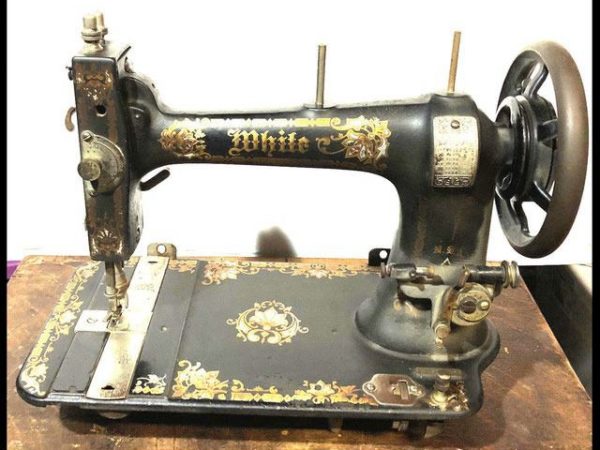
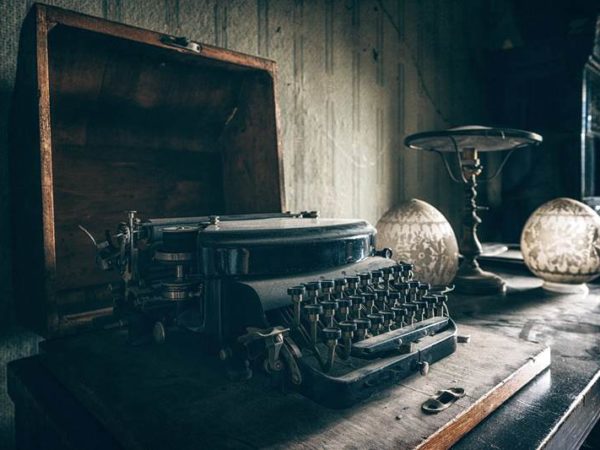
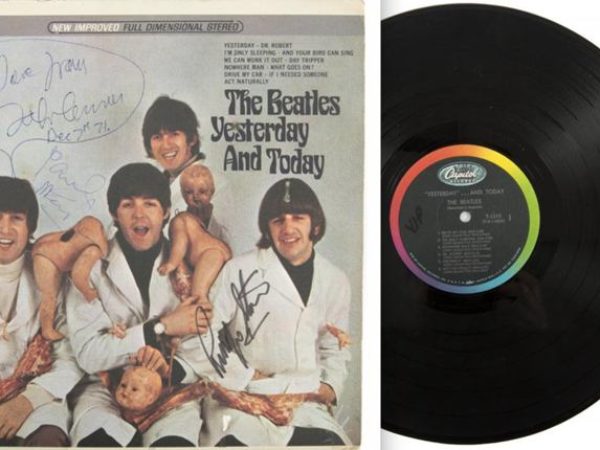

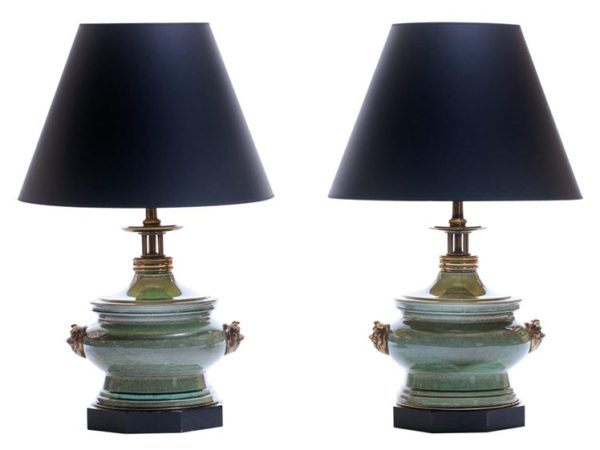

![Vintage Schwinn Bikes: [Types, Identification, and Values]](https://www.txantiquemall.com/wp-content/uploads/2022/05/5.-Schwinn-1967-Ramshorn-Fastback-Stingray-Sky-Blue-vtg-600x450.jpg)
